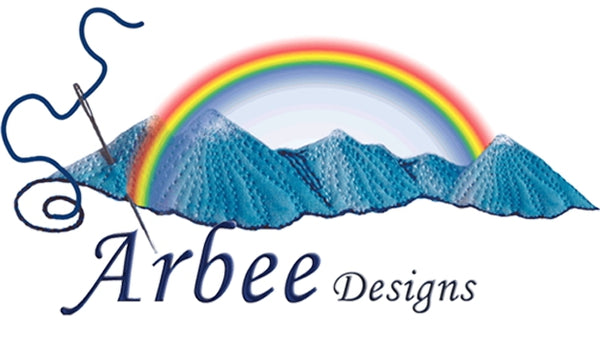Tips for Applique
Quilting is a very popular hobby and covers a huge range of topics such as applique, patchwork and quilting and then each of these topics cover many different techniques both by hand stitching and machine. When you view the quilts on my website, you will notice that I deal mostly in applique quilts. I found many quilters are afraid to try applique, which is a shame because in most cases, applique is just as easy as patchwork with less need to be accurate in your stitching.
So where does one begin with applique? There are many different forms of applique and the best thing to do is try as many as possible to see which technique you like and which give you pleasing results. Actually I have a great workshop that uses many different applique techniques as you create a beautiful butterfly and flower quilt: BOM Spring Life
One of my favorite techniques, which I have been developing over my many years of quilting, is raw edge applique with free-motion stitching on the sewing machine. I heard (when I was at quilt shows) comments from other quilters when they saw raw edged applique - "I don't like the frayed edges" or "Frayed edges look tacky in a quilt". So I set about testing ways to change this and now I ask my students a number of questions when they are first learning this method.
"Are you using a new needle?" Do you have any idea what a blunt needle will do to your fabric when it is dull? It does not slide between the fibers of the fabric but rather hits the fibers causing stress on them and sometimes breaking them. Broken fibers cause the fabric to fray.
"Are you stitching too close to the edge of your applique shape?" When stitching only a thread from the edge, the needle will push those threads on the edge out, away from the rest of the fabric. As a result, your applique shape will fray. You should stitch about 1/16" to 1/8" from the edge. You do not have to measure this accurately, just eyeball it and yes, I do go over the edge sometimes too, but the more you practice, the more control you have.
"Are you using a good quality patchwork fabric?" With todays economy, we are always trying to save a few dollars, but be warned, it is not a good time to save on the quality of your fabric. Do not buy low quality patchwork fabric as it has a low thread count and can be loosely woven which is not good for applique. In fact, it is not good for patchwork either as it can easily move as you stitch it which in turn gives you less accuracy.
One last question I ask is "Is your applique shape fully adhered in place?" When the applique shape is not adhered correctly, it has room to move under the needle and sometimes the adhesive will even cling to the needle pulling it away from the background. You should always ensure the applique shape is secure especially on points. On the other hand, do not over press your shapes. In several classes recently, I have seen a student press their work too long, which melts the adhesive away to nothing. Of course, then the applique shape will not stick at all.
In conclusion, you will find that if you follow these tips while appliquéing, you will have a lot less problem with fraying in raw-edge applique. This method of quilting is certainly rewarding and once you get into it, you open a whole new world of creativity.
© Copyright 2012- Arbee Designs. All Rights Reserved. This content is copyrighted by the respective teachers or authors of the article/lesson presented on this page. Unless otherwise indicated, all other content is the property of Arbee Designs. You may not make copies of the material for others without the written permission of Arbee Designs.
